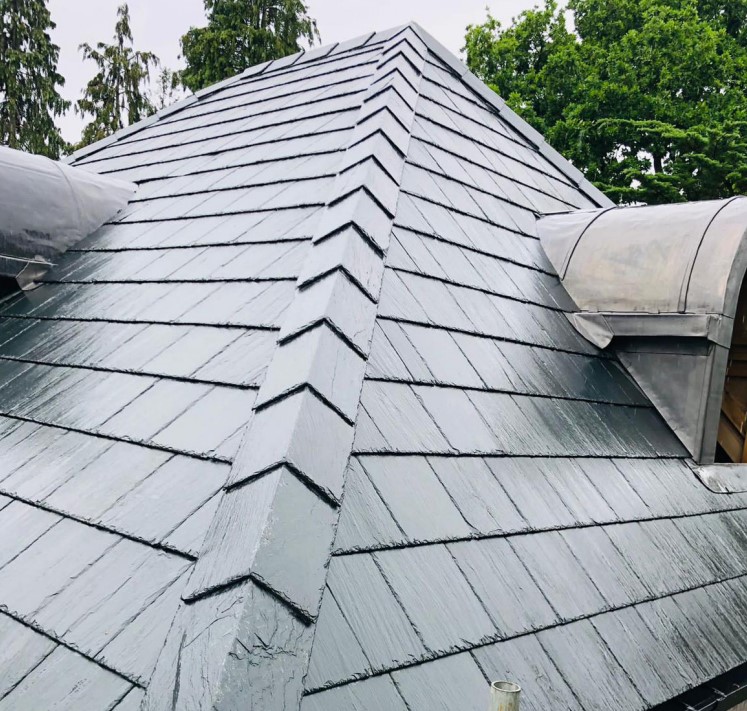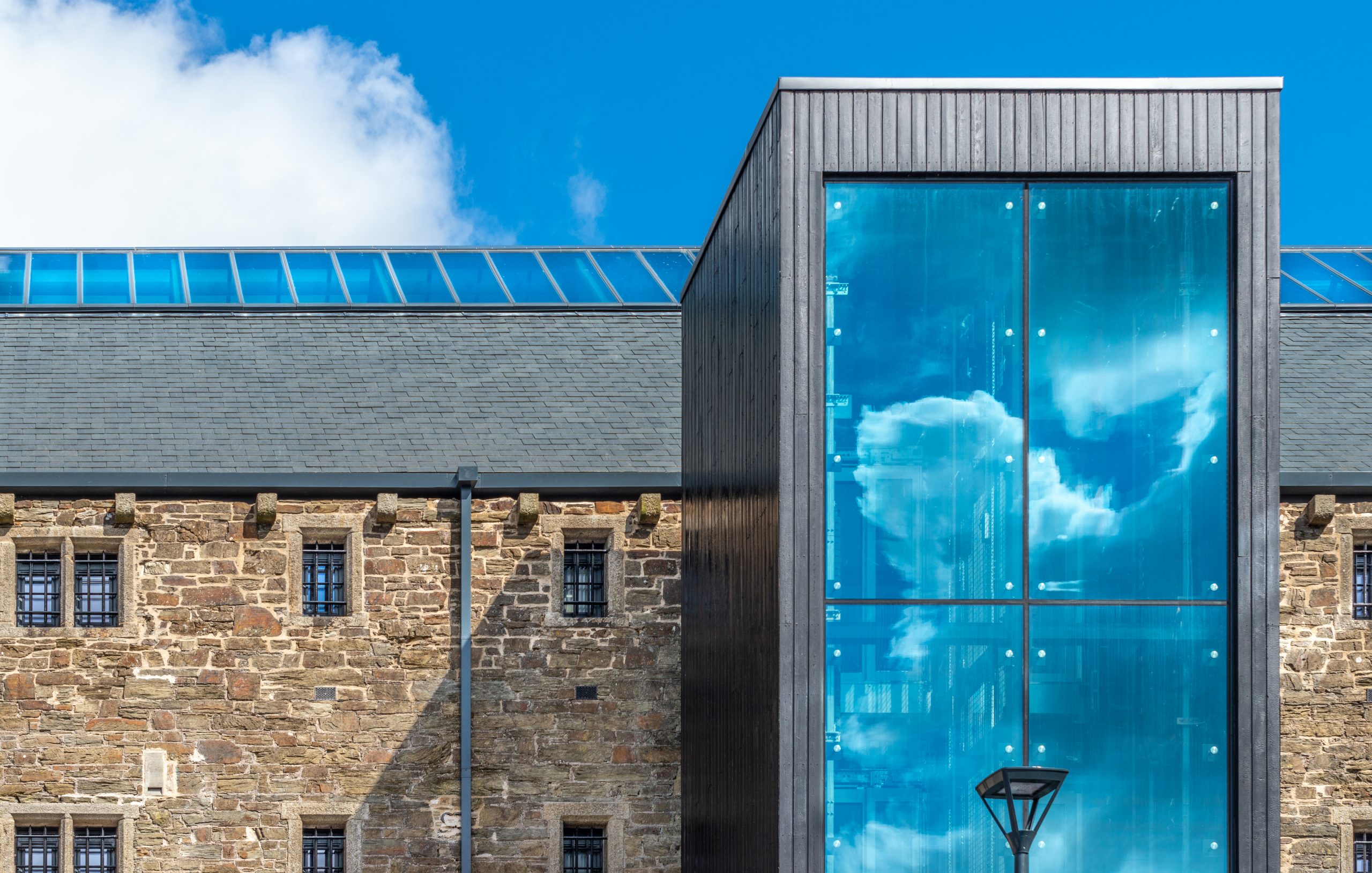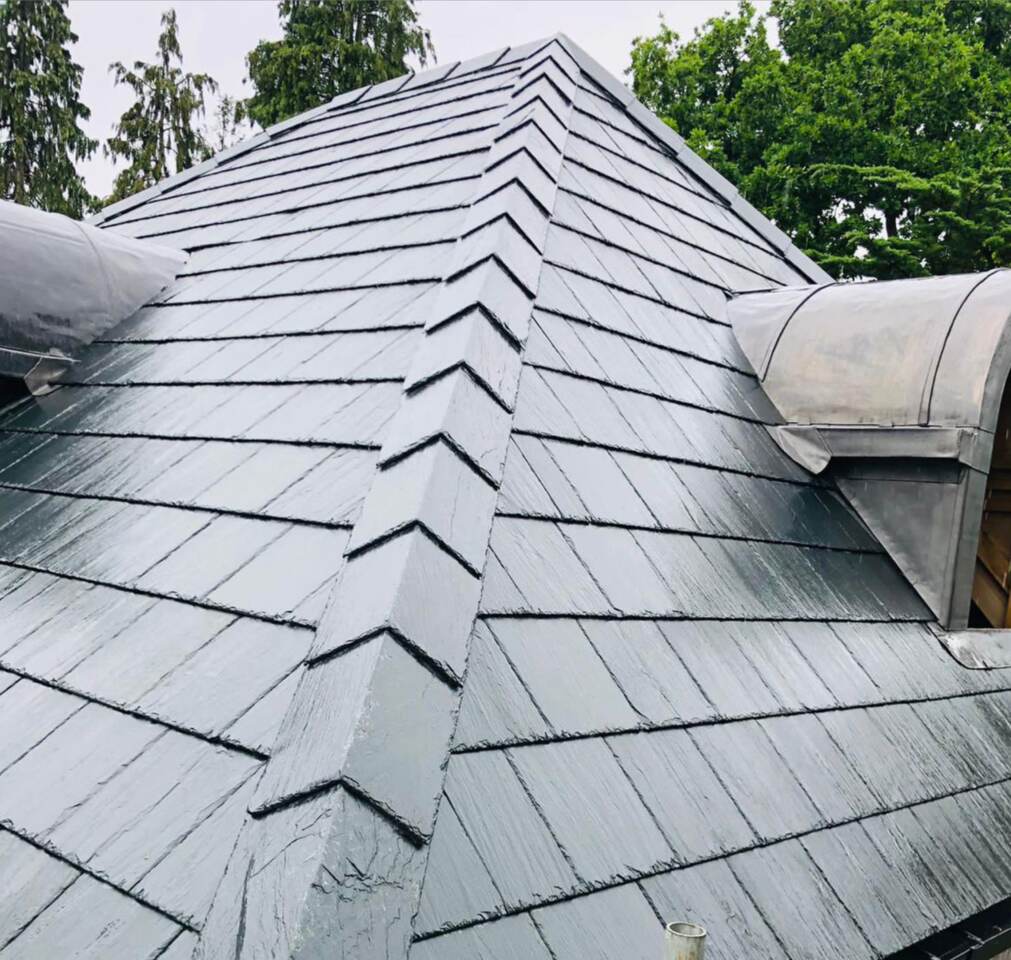In an era where environmental consciousness is vital, the construction industry finds itself at a crossroads. Architects and specifiers are increasingly tasked with balancing aesthetic appeal, durability, and sustainability in their projects. One option that stands out for its remarkable ecological credentials, timeless beauty and sustainability is sustainable slate. Slate is a hugely popular material There are huge advantages to using sustainable slate in modern construction due to its environmental impact and long-term benefits.
Understanding the Environmental Impact of Building Materials: Why Does It Matter?
The environmental impact of building materials is so important. The construction industry is one of the largest consumers of raw materials and energy globally, accounting for a significant portion of carbon emissions and waste production.
As climate change concerns intensify, there’s a growing imperative to reduce the carbon footprint of our built environment.
Architects and specifiers play a pivotal role in this green revolution. By choosing materials with lower environmental impact, they can significantly reduce the overall ecological footprint of their projects. This is where sustainable slate enters the picture, offering a natural roofing material that combines durability, elegance, and eco-friendliness.
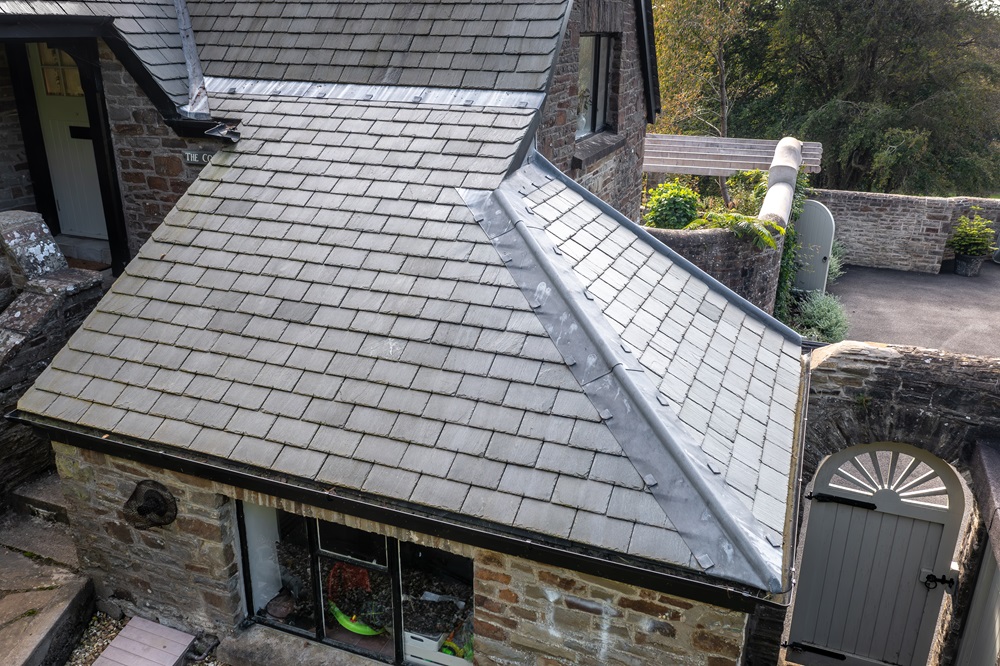
What Makes Slate a Sustainable Alternative in Roofing?
Slate, a natural product formed over millions of years, is renowned for its durability and elegant appearance. But what makes it a sustainable alternative compared to artificial materials?
Minimal Processing: Unlike many artificial roofing materials, slate requires little manufacturing. It’s extracted from quarries and undergoes minimal processing before it’s ready for use. This efficient production process results in lower carbon emissions and energy consumption.
Longevity: Slate is one of the most resistant materials in construction. A properly installed slate roof can last for over a century, far outlasting many alternative roofing materials. This longevity means fewer replacements and, consequently, less waste and resource consumption over time.
Natural Composition: As a natural material, slate doesn’t contain harmful chemicals or synthetic compounds. This means no chemical emissions during its life span, contributing to better air quality both during installation and throughout the roof’s lifetime.
Energy Efficiency: Slate’s natural properties make it an excellent insulator. This can contribute to better energy efficiency in buildings, potentially reducing heating and cooling costs.
End-of-Life Recyclability: When a slate roof finally reaches the end of its long life, the material can often be recycled or repurposed, further reducing its environmental impact.
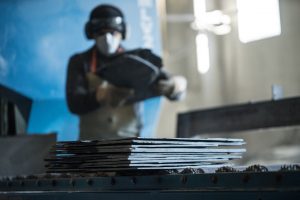
SSQ’s Commitment to Sustainability: Leading the Way in Eco-Friendly Slate
At SSQ, sustainability guides every aspect of our operations. Our commitment to providing high-quality, sustainable slate is evident in our products and practices:
Spanish Del Carmen Slates
Our Spanish Del Carmen slate is renowned for its quality and durability. These slates are extracted using sustainable quarrying methods that minimize environmental disturbance. The production process is streamlined for efficiency, reducing energy consumption and carbon emissions.
Riverstone Phyllite from Argentina
Riverstone, our phyllite product from Argentina, offers exceptional durability and a unique aesthetic. Like our Del Carmen slate, Riverstone is produced with a focus on sustainability, ensuring minimal environmental impact from quarry to roof.
Low carbon emissions
SSQ slate such as Spanish Slates, has some of the lowest levels of embodied carbon of any construction material. In terms of CO² emissions, the most popular roofing materials differ significantly. While CO² emissions per kilo for concrete and clay are 0.19 and 0.43 respectively, Slate is 0.005.
Sustainable Practices
SSQ has implemented numerous sustainable practices throughout our operations:
- Efficient quarrying techniques to minimize waste and energy use
- Optimised transportation routes to reduce carbon emissions
- Recycling programs for slate offcuts and waste materials
- Ongoing research into more sustainable extraction and production methods
Sustainability Accreditations
SSQ is committed to sustainability and meeting uncompromising quality standards. We have a gold standard Carbon offset certificate, are working towards BREEAM green book inclusion, and our Spanish partners hold ISO 14001 certification.
Our Riverstone slate has a BRE Global Limited statement of verification, confirming its environmental declaration meets EN 15804 standards. This covers the slate’s entire lifecycle, from extraction to installation.
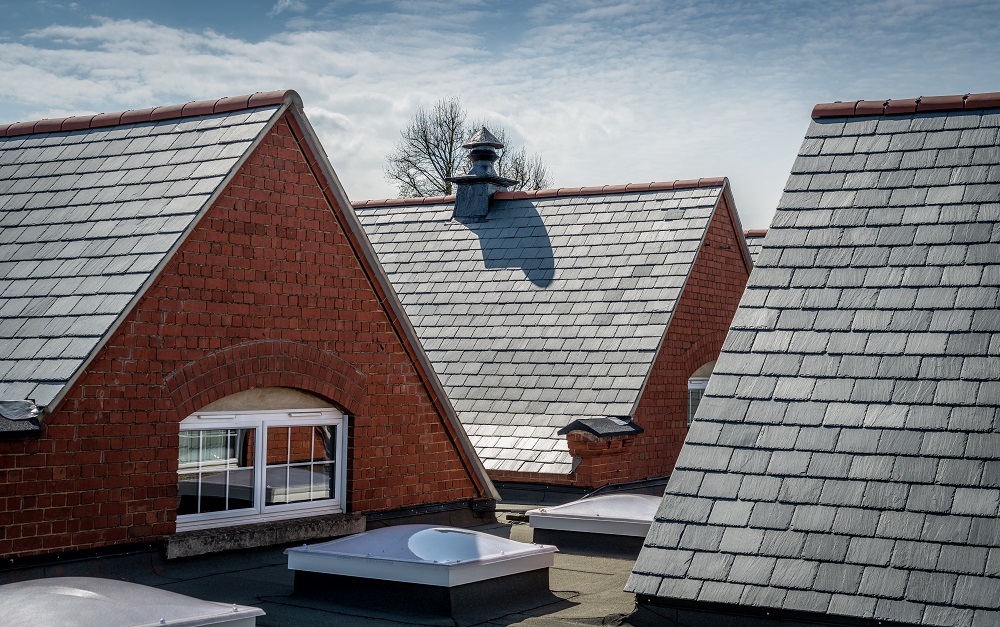
The Long-Term Environmental Benefits of Sustainable Slate in Construction
When considering the environmental impact of a roofing material, it’s essential to look at its entire life cycle. This is where sustainable slate truly shines:
Lowest Embodied Energy: Slate has one of the lowest embodied energy values of any roofing material. Embodied energy refers to the total energy required to produce a material, from extraction to manufacturing and transportation. Due to its minimal processing requirements, slate outperforms many artificial products in this regard.
Reduced Carbon Footprint: The combination of low embodied energy, long lifespan, and minimal chemical emissions means that slate roofs have a significantly lower carbon footprint compared to many alternatives. Over the course of its life, a slate roof can contribute to substantial reductions in a building’s overall environmental impact.
Natural Insulation Properties: Slate’s natural insulating properties can contribute to improved energy efficiency in buildings. This can lead to reduced energy consumption for heating and cooling, further lowering the building’s carbon footprint over time.
Minimal Maintenance Requirements: Unlike some roofing materials that require regular treatments or replacements, slate roofs will have a minimal need of maintenance. This reduces the need for additional materials and energy expenditure over the roof’s lifetime.
End-of-Life Considerations: When a slate roof finally reaches the end of its long life, the material can often be recycled or repurposed. This circular approach further minimizes waste and resource consumption.
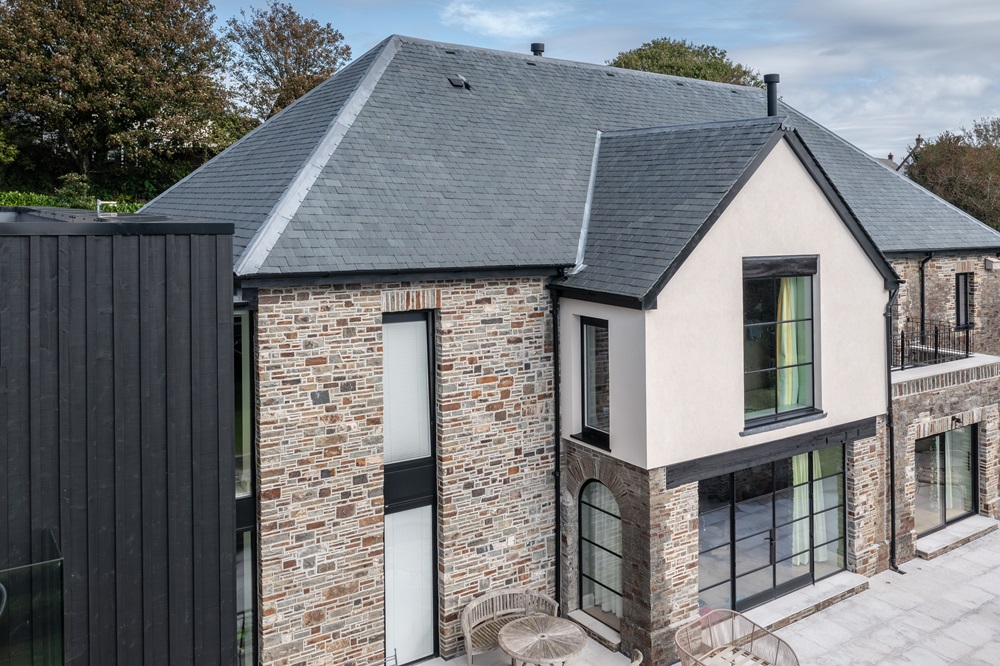
Sustainable Slate: The Best Ecological Option for Your Architectural Project
As we’ve explored, sustainable slate offers a compelling combination of durability, beauty, and environmental responsibility. For architects and specifiers looking to create truly sustainable buildings, slate represents an excellent choice:
Natural Beauty: Slate offers a timeless, elegant appearance that can enhance any architectural style.
Durability: With proper installation, a slate roof can last for over a century, outlasting many alternative materials.
Low Environmental Impact: From extraction to end-of-life, slate has minimal environmental impact compared to many artificial roofing materials.
Energy Efficiency: Slate’s natural insulating properties can contribute to improved building energy efficiency.
Versatility: Slate can be used in various architectural applications, from traditional to contemporary designs.
Low Maintenance: Once installed, slate roofs require minimal maintenance, reducing long-term costs and resource use.
By choosing sustainable slate for your projects, you’re not just selecting a roofing material – you’re making a statement about your commitment to sustainability and quality.
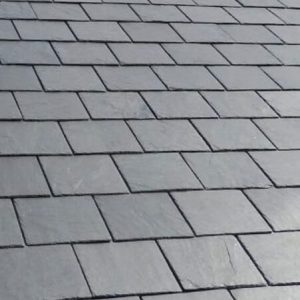
Discover Sustainable Slate for a Greener Future
As an architect or specifier, your choices have a profound impact on the built environment and its ecological footprint. By considering the environmental impact of your material choices, you can play a crucial role in creating more sustainable, resilient buildings.
Why not explore the possibilities of sustainable slate in your next project? Whether you are working on a residential property or a commercial building, our range of sustainable slate products can help you achieve your design goals while minimising environmental impact.
Get in touch today with SSQ to learn more about our sustainable slate options, including Spanish Del Carmen slates and Riverstone phyllite from Argentina. Our team of experts is ready to assist you in making informed, environmentally responsible choices for your architectural projects. Call 020 3481 6442, email info@ssq.co.uk or get a quote online.
Frequently asked questions
How does the lifespan of sustainable slate compare to other roofing materials?
Sustainable slate is one of the most durable roofing materials available. A properly installed slate roof can last over 100 years, significantly outlasting many alternative materials.
Is sustainable slate more expensive than other roofing options?
While the initial cost of sustainable slate may be higher than some alternatives, its longevity and low maintenance requirements often make it more cost-effective in the long run. When considering the lifespan of the roof, slate can be a very economical choice.
How does the carbon footprint of sustainable slate compare to artificial roofing materials?
Sustainable slate typically has a lower carbon footprint compared to many artificial roofing materials. This is due to its minimal processing requirements, long lifespan, and the fact that it’s a natural product that doesn’t release chemical emissions over time.
Can sustainable slate be recycled at the end of its life?
Yes, one of the advantages of sustainable slate is its recyclability. At the end of its long lifespan, slate can often be repurposed or recycled. It can be crushed and used as aggregate in construction, used in landscaping, or even repurposed for smaller roofing projects. This recyclability further enhances slate’s sustainability credentials by reducing waste and extending the material’s useful life beyond its initial application.
